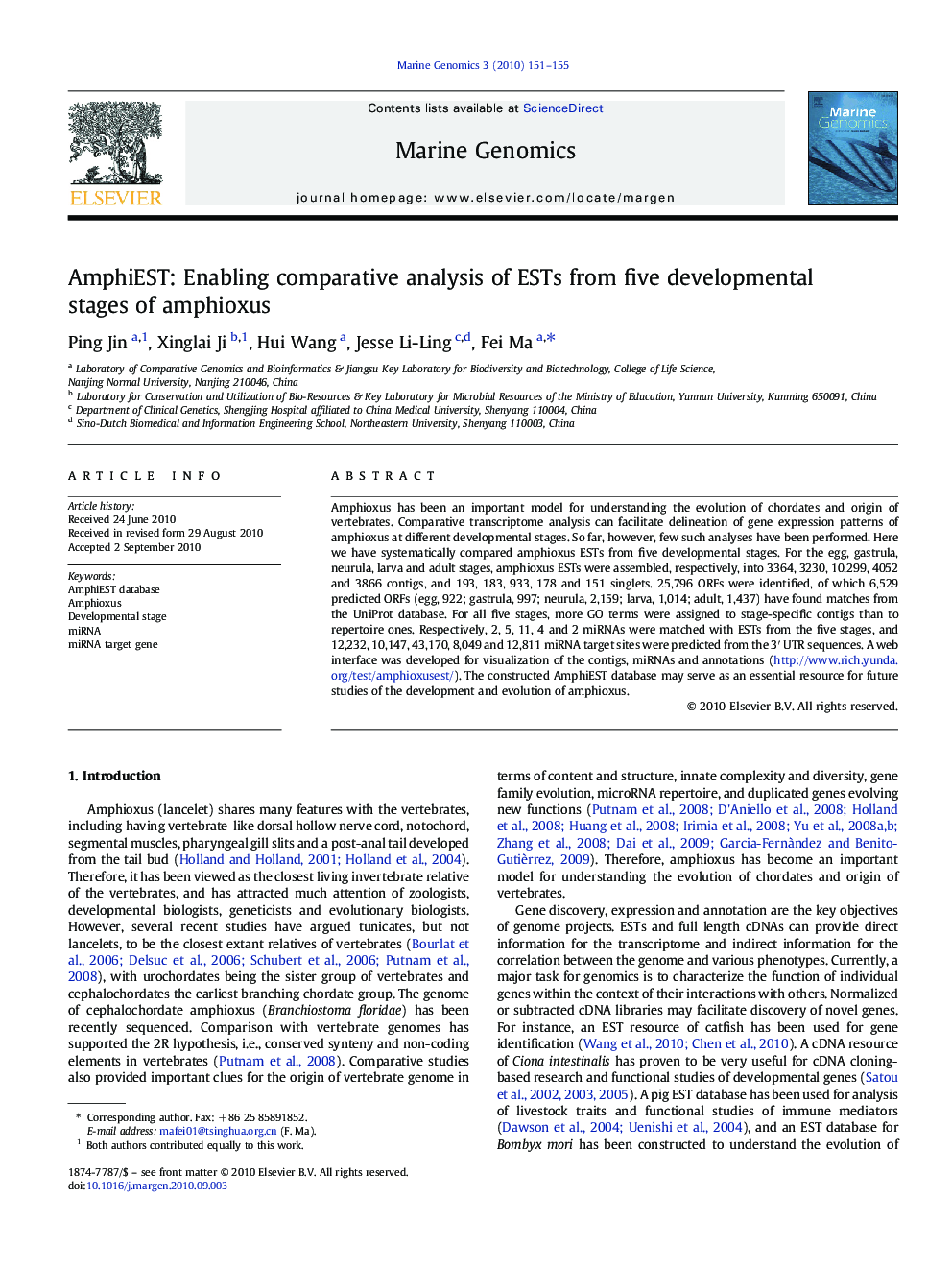| Article ID | Journal | Published Year | Pages | File Type |
|---|---|---|---|---|
| 2058266 | Marine Genomics | 2010 | 5 Pages |
Amphioxus has been an important model for understanding the evolution of chordates and origin of vertebrates. Comparative transcriptome analysis can facilitate delineation of gene expression patterns of amphioxus at different developmental stages. So far, however, few such analyses have been performed. Here we have systematically compared amphioxus ESTs from five developmental stages. For the egg, gastrula, neurula, larva and adult stages, amphioxus ESTs were assembled, respectively, into 3364, 3230, 10,299, 4052 and 3866 contigs, and 193, 183, 933, 178 and 151 singlets. 25,796 ORFs were identified, of which 6,529 predicted ORFs (egg, 922; gastrula, 997; neurula, 2,159; larva, 1,014; adult, 1,437) have found matches from the UniProt database. For all five stages, more GO terms were assigned to stage-specific contigs than to repertoire ones. Respectively, 2, 5, 11, 4 and 2 miRNAs were matched with ESTs from the five stages, and 12,232, 10,147, 43,170, 8,049 and 12,811 miRNA target sites were predicted from the 3′ UTR sequences. A web interface was developed for visualization of the contigs, miRNAs and annotations (http://www.rich.yunda.org/test/amphioxusest/). The constructed AmphiEST database may serve as an essential resource for future studies of the development and evolution of amphioxus.
